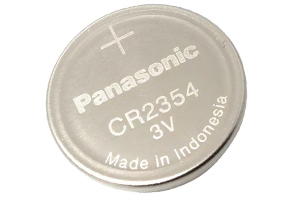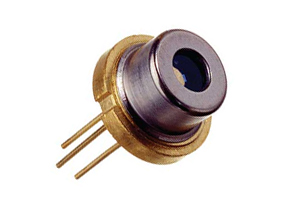What are Analog to Digital Converters? Understanding their Importance in Electronics
Author:admin Date: 2025-04-29 08:41 Views:878
Electronic Basics #27: ADC (Analog to Digital Converter)
Introduction
Analog-to-digital converters are devices that transform analog signals into discrete digital signals. Such a conversion is necessary since most electronics and computer systems operate using digital signals. This also allows for ease of storage, transmission, and manipulation of data.
The analog to digital converter (ADC) now has many applications thanks to its operation. Expect it to be used in data acquisition, scientific instruments, audio processing, and many others.

Analog to Digital Conversion
Importance of Analog to Digital Converters
Whether it is a digital to analog audio converter or any other type, they are important for the functionality of many devices. Here are more reasons why an ADC is crucial.
1. Bridge the digital and analog worlds
The conversion allows devices operating at different levels to communicate. That is how the device can take analog data, process it, and display it in a format that modern electronics understand. This applies to various devices such as computers, microcontrollers, and smartphones that work with digital signals.
2. Enables digital signal processing
The analog-to-digital converter is essential for converting analog signals into digital data. This is done using digital algorithms to get the desired output. As expected, you can find many applications for such devices. This includes noise reduction, compression, and signal filtering.
3. Used in diverse fields
ADCs are quite versatile, which is why you will come across them in various fields. For example, audio recording and playback. This is when the ADC is crucial for a public addressing system, where analog signals are picked up by the microphone and then converted into digital signals before being used as output in the speakers.
We also find analog-to-digital converters essential for telecommunication systems. Here, the data is converted from analog voice signals into digital format for transmission to the receiver and vice versa.
At this point, we can see that the ADCs are vital in a wide range of applications. This allows for the easy integration of analog signals into the digital world, where necessary. The result is having multiple functionalities.
How Analog to Digital Converters Work

ADC conversion process
Several steps are involved in analog-to-digital signal conversion. We will look at them below to help you understand how the ADC works.
Sampling
This is the first step in how an ADC works. During this stage, the ADC takes period samples of the input analog signal. The process is based on the sampling frequency.
The sampling frequency is usually two times the maximum frequency of the analog signal. A sample-and-hold circuit is also used to freeze the analog signal during sampling. This ensures that the ADC receives a stable value for conversion.
Quantization
This is the next step after sampling. It is a vital step for determining the ADC’s resolution or number of bits. For example, when you have an 8-bit ADC, it represents the analog signal using 256 different levels.
This process introduces a quantization error, as digital representation is considered an approximation of the analog signal.
Encoding
This is where the digital sample is assigned a unique binary code representing its amplitude. For example, an 8-bit ADC will have an 8-digit binary number.
The overall accuracy of the digital signal depends on the ADC’s resolution. Having a higher resolution means the ADC can deliver with better precision. However, this requires more complex circuits.
Output
Once the conversion is done, the digital signal is then transmitted to a digital processing unit, such as a computer or microcontroller, for display, storage, or further analysis.
Performance Parameters of Analog to Digital Converters
Analog-to-digital converters are characterized by having several performance parameters. Such include:
Resolution
This is the number of bits used in the digitization of a signal. They also help determine the precision of the analog-to-digital conversion. Having a higher resolution is always better and gives you greater accuracy.
Sampling Rate
This is the number of samples taken per second. This directly affects the ADC’s speed. Of course, having a higher sampling rate means the device captures analog signals faster.
Signal-to-Noise ratio
This is the ratio of the signal power to the noise power. It indicates the quality of a digitized signal. Having a higher signal-to-noise ratio (SNR) means there is less noise in the digital signal. This results in a more precise representation.
Dynamic Range
These are the range of amplitudes that the ADC can convert. This influences its ability to represent large and small signals. Having a wider dynamic range is better as it allows for capturing a broad range of input levels.
Effective Number of Bits or ENOB
This is a measure of the actual number of bits that lead to useful information after conversion. This takes into account distortion and noise. The ENOB is vital for determining the quality of the ADC’s performance.
Input Range
This represents the minimum and maximum voltage levels an ADC can handle effectively. This parameter is necessary for ensuring the input signal remains within the operating range of an ADC.
Total Harmonic Distortion or THD
This is the amount of unwanted harmonic distortion introduced by the ADC. They can be a source of noise and ultimately affect the signal quality of the ADC.
Types of Analog to Digital Converters
You are likely to come across different types of analog-to-digital converters. It all depends on how they work and their application. Here are a couple of examples.
Flash ADCs
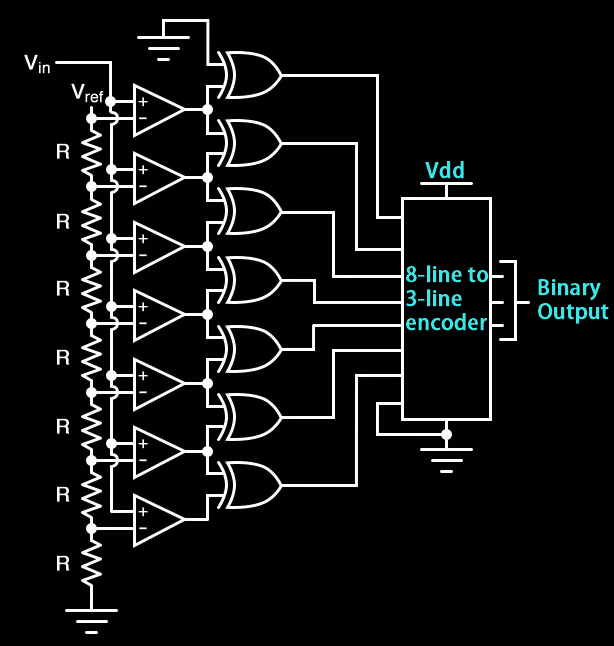
These work by using a network of comparators and a reference voltage that is used to compare with the input signal at multiple levels.
These are fast and can convert an analog signal to a digital signal in one clock cycle. Due to their speed, they are commonly used in digital storage oscilloscopes and high-frequency systems where speed is crucial.
Successive Approximation Register (SAR) ADCs
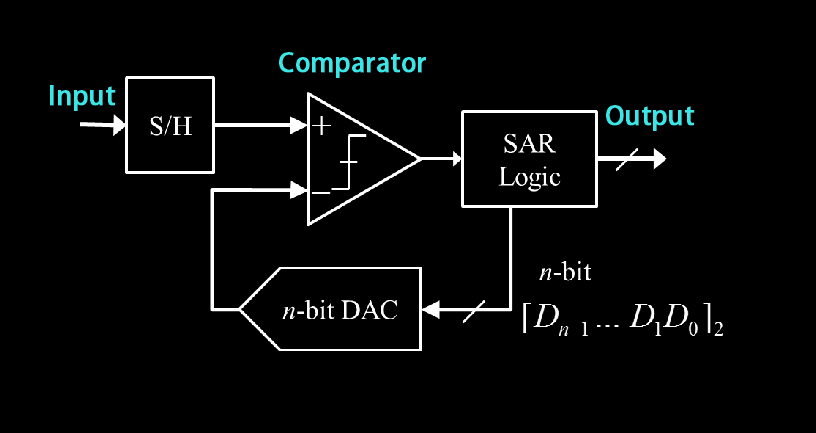
These ADCs use a binary search approach, which is vital for finding the digital value closest to the analog input. They offer a good balance between power consumption, resolution, and speed.
These ADCs are commonly used in microcontrollers, data acquisition systems, and many other related applications.
Sigma Delta ADCs
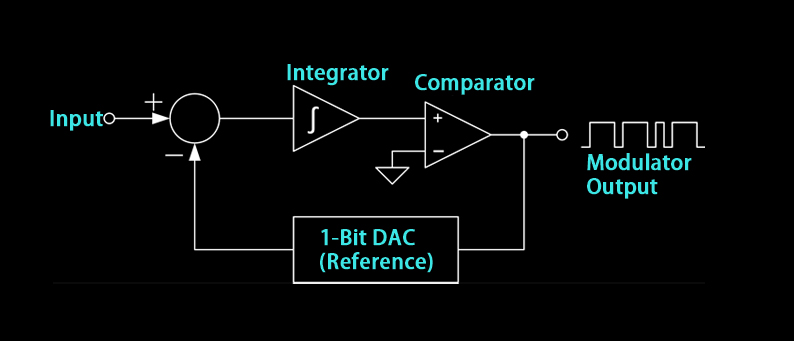
The working mechanism of these ADCs involves oversampling the input signal and then using a digital filter to produce a high-output digital signal. This mechanism leads to high resolution and excellent performance against noise.
If you need an ADC for precise measurements, such as audio processing, this will be a good choice.
Dual Slope ADCs

This type of ADC integrates the input signal over a fixed period and then performs a counter measurement during a de-integration phase. The result is having high resolution and low noise. However, the process makes them slower compared to the other types.
The ADC works best for applications that require low noise and high resolution. This includes battery monitoring and digital multimeters.
Pipelined ADCs
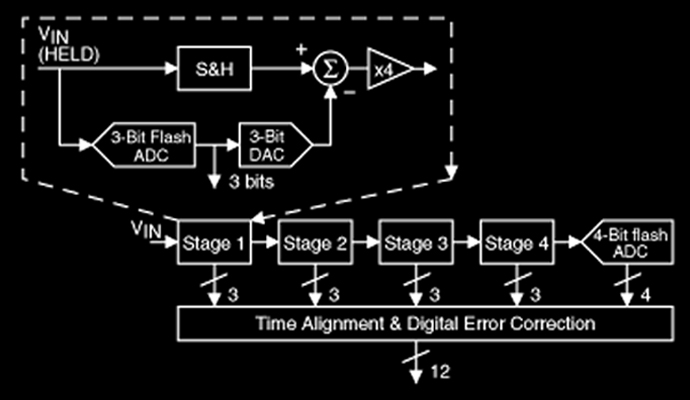
These ADCs work by breaking down the conversion process into multiple stages. This allows for a higher speed. Because of this, you get a high resolution and high throughput, which are important for various applications.
We recommend such units for applications that need high speed and high resolution. This includes wireless communication systems and video processing.
Applications of Analog to Digital Converters
You can expect to come across many uses of analog-to-digital converters. They include:
- Audio and video processing
- Data acquisition and control
- Telecommunications
- Digital storage oscilloscope
- Scientific and industrial instrumentation
- Medical imaging
- Digital audio workstations
- Smartphones etc.
How to Choose the Right Analog to Digital Converters
Now that you know more about analog to digital converters, it is time to choose one that works for you. Below is a buying guide to keep in mind.
- Keep in mind the resolution of the ADC. This is usually stated in bits, and it determines the overall quality of the final digital signal. Having greater resolution is vital to detect minute changes in the input signal.
- The sampling rate is also important. It is vital for the sampling rate to be twice as high as the highest frequency of the input signal. Distortion of the signal can happen if the sampling rate is too low.
- Accuracy is another important aspect to consider. It determines how close the digital signal is to the input analog signal. Factors such as differential nonlinearity, integral nonlinearity, and quantization eros determine the accuracy of the signal.
- Power consumption is important to consider as well. This is because ADCs may sometimes use a lot of power. You need a model that uses minimal power but it should still produce high-quality output.
- The cost is another critical consideration. You need an ADC that offers a good balance between cost and performance. Expect ADCs with high throughput and resolution to cost more compared to the other types.
Conclusion
An analog-to-digital converter is essential in many ways, as we have seen above. It is, therefore, crucial to always get the proper ADC for the job. Examine its performance features to determine if it’s suitable for your needs. Also, buy from top brands if you have to get one so that the digital output signal will have the right performance parameters you are looking for in a unit.
Please send RFQ , we will respond immediately.
Frequently Asked Questions
Where are analog-to-digital converters used?
The ADCs are common in many devices we use today. Examples include audio recording equipment, medical devices, smartphones, automotive sensors, and more.
What is a quantization error in ADCs?
This error is a result of the analog-to-digital conversion process. It is the small difference between the input signal and output digital value of the ADC processes. This is what affects the accuracy of the ADC.
How is the accuracy of the ADC measured?
It is measured based on various parameters. They include an effective number of bits, signal-to-noise ratio, spurious-free dynamic range, and total harmonic distortion.
How can you improve the ADC performance?
The ADC performance can be improved by using the right filters, shielding it from EMI, stabilizing power supplies, and also matching the impedance between the ADC input and signal source.
